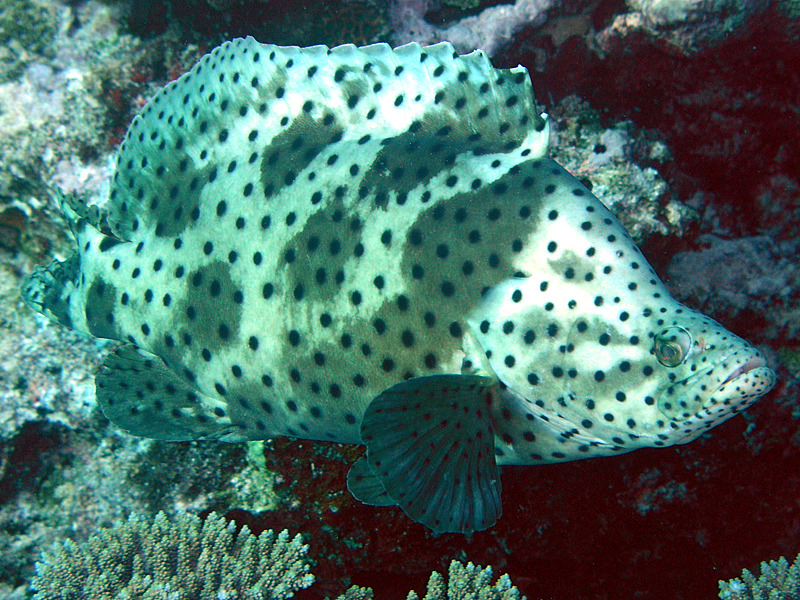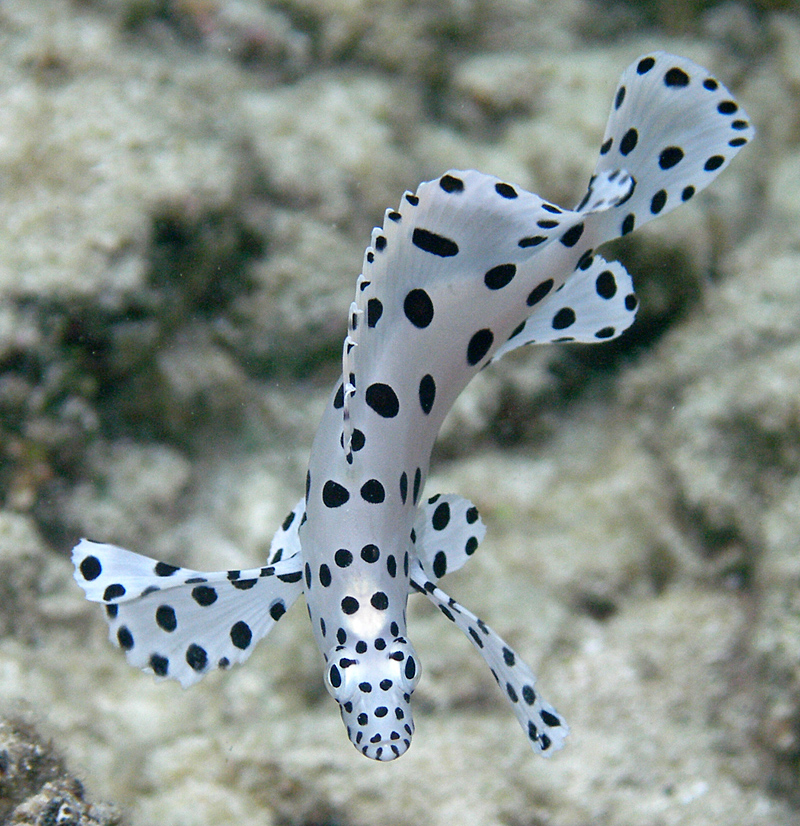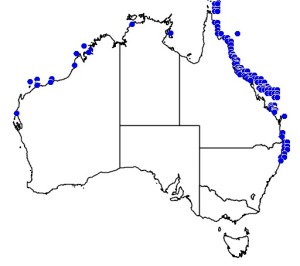Colours
Distinguishing features
A medium to large sized rock cod with an off-white body covered with darker blotches and a speckling of small black dots. There is a concave profile in the forehead above the eyes.
Size
- Up to 70 cm (Standard length)
Depth range
- Depth range data is not yet available.
Synonyms
Distribution
Distribution and habitat preferences
Areas of good coral cover with shelter caves, along reef fronts and in passes.
Can be found in most locations around the island, but not common anywhere.
Behaviour
The Barramundi Cod is a monandric protogynous hermaphrodite, with fish starting life as females and changing to male later if they reach a large size. This species is an ambush predator, lying in wait for small fishes to venture close to its hiding place, before making a rapid attacking rush. It is a long-lived fish and uncommon fish, and susceptible to fishing pressure and therefore rare throughout much of its former Indo-Pacific range. However, this species is now cultured commercially which has taken pressure off wild stocks.
Web resources
References
- D Beukers-Stewart, B. and G.P. Jones (2004). The influence of prey abundance on the feeding ecology of two piscivorous species of coral reef fish, Journal of Experimental Marine Biology and Ecology, 299: 155-184. LIRS catalog number 868.
- Sabetiana, A. (2003). The association of physical and environmental factors with abundance and distribution patterns of groupers around Kolombangara Island, Solomon Islands, Environmental Biology of Fishes, 68: 93-99. LIRS catalog number 90131.
- Stewart, B.D. and G.P. Jones (2001). Associations between the abundance of piscivorous fishes and their prey on coral reefs: implications for prey-fish mortality, Marine Biology, 138(2): 383-397. LIRS catalog number 670.


